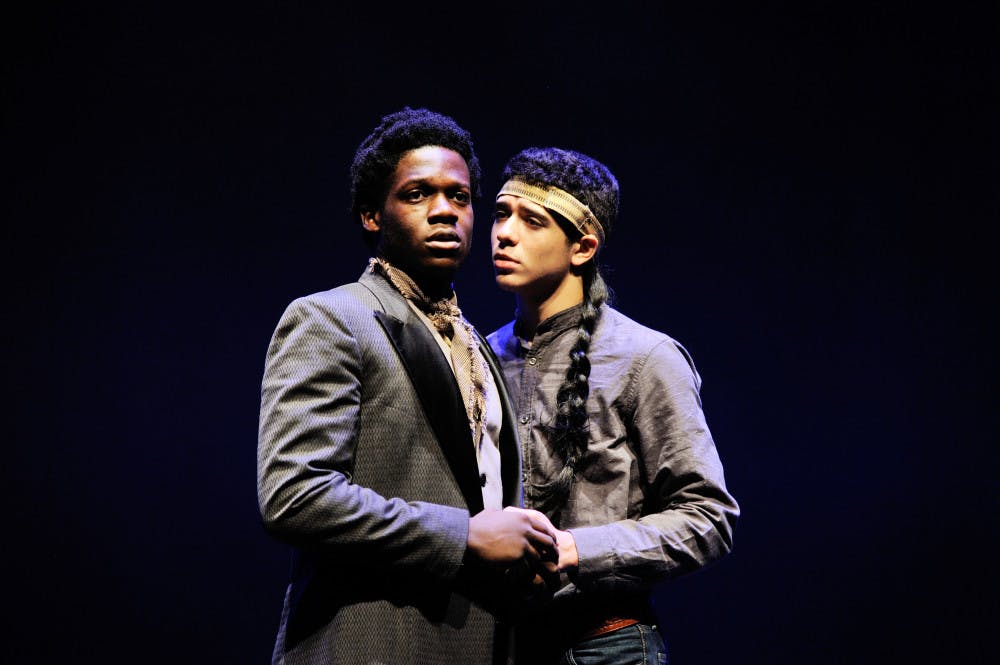In Sock and Buskin’s newest production “The Road Weeps, The Well Runs Dry,” legend and history come together to present a portrait of mid-19th-century life from a segment of the American population not usually depicted: the Black Seminoles, a group of black and Native American people.
Written by Marcus Gardley, assistant professor in playwriting, and directed by Kym Moore, associate professor of theatre arts and performance studies, “The Road Weeps, The Well Runs Dry” follows a community of Black Seminoles forced to relocate from Florida to Oklahoma on the Trail of Tears. There, they create a new community and culture that is entirely their own while struggling with their racial and cultural histories. The Black Seminoles also face continued rivalries both within their community and with the neighboring Creek tribe. While the play depicts the plight of the diverse Seminole community, it also incorporates a mystical undercurrent that allows for a more metaphorical interpretation of its larger themes.
The main organizing plot point involves a murder that curses the community, thereby causing the town’s well to run dry. The ramifications of the murder and the dried-up well wreak havoc on the members of the community, forcing the town to wrestle with conflicts between Native tradition and Christian assimilation, love and hate and men’s and women’s gender roles.
Creative staging and casting allowed the “The Road Weeps, The Well Runs Dry” to span 16 years and even include flashbacks into the characters’ pasts. The effect of all this was a depth that allowed the play to explore concepts of gender, sexuality and race during a time period when such diversity was rarely considered.
Even with its historical content, the play managed to add a nod to the modern with the inclusion of contemporary dance, music and lighting. Its most notable invocation of the modern involved a quasi-rap from the character Fat Rev, played by the ironically lanky Sam Heft-Luthy ’16, a former Herald senior staff writer. Heft-Luthy’s pugnacious relationship with his wife M. Gene, played by Midori Cassou ’17, the commanding first lady of the church, made up one of the most humorous scenes in the play.
Sock and Buskin’s production emphasized the multi-faceted aspects that make up the play’s dynamic characters. An additional standout performance came from Mary, played by Crystal Kim ’16, who portrayed a character who could well be considered a historical forerunner to Elle from “Legally Blonde” — both light and airy and far wiser and more in tune than those around her realize. Unconventional character dynamics also course through the play, with a trio of three characters depicting one mystical elder called Horse Power.
The theme of water flows through the play, representing the ability to move on and wash away the past. Ultimately, “The Road Weeps, The Well Runs Dry” is a discussion about moving on and reconciling cultural past with a new environment. The audience accompanied the play’s characters on a journey that culminates in Number Two, played by Javon Stephenson ’18, breaking into tears — a symbol of acceptance, repentance and recovery.
Corrections: A previous version of this article misstated Sam Heft-Luthy's '16 surname on second reference. It also misstated that Marcus Gardley is a visiting lecturer, rather than an assistant professor. The Herald regrets the errors.





